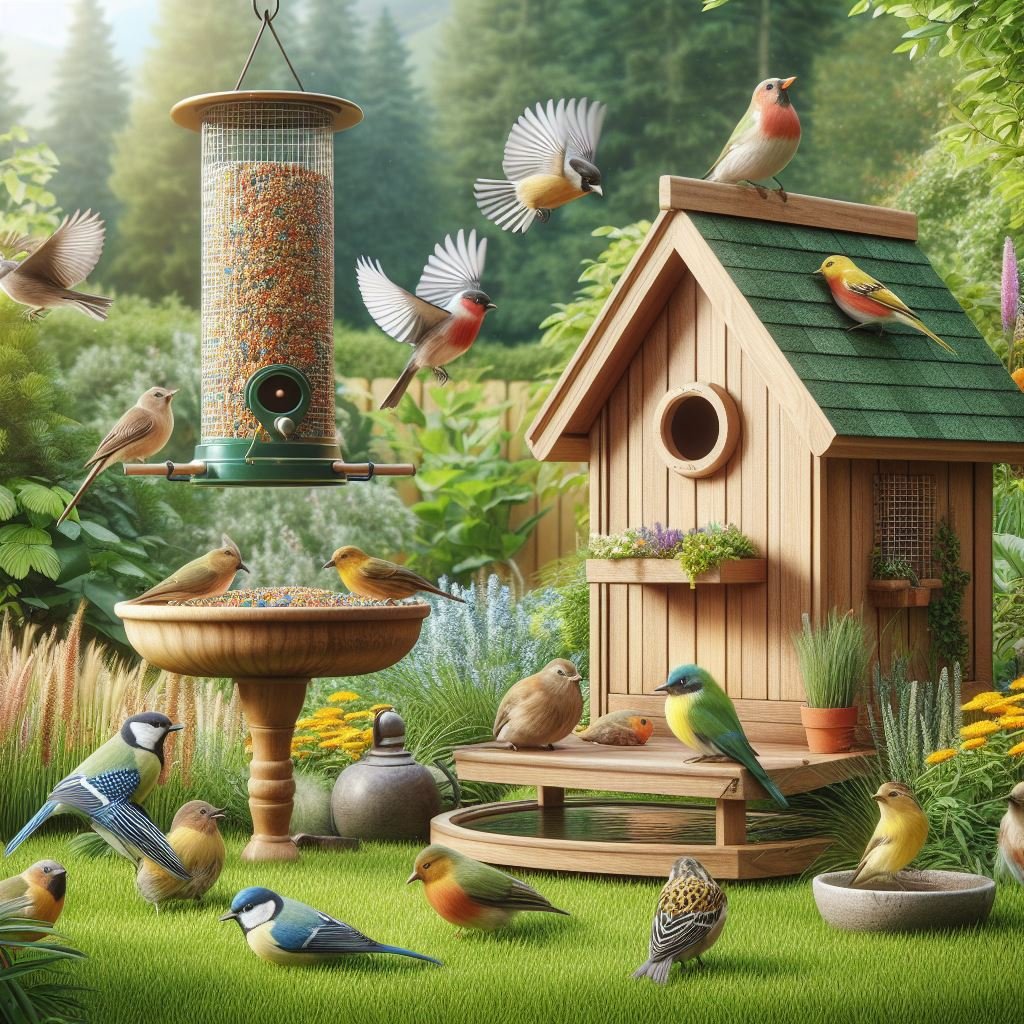Do you love birds and want to see more of them in your backyard? Do you wonder what kinds of birds visit your area and how to recognize them? Do you wish you could attract some of the rare and exotic birds that you see in books and magazines? If you answered yes to any of these questions, then this article is for you. In this article, you will learn how to identify and attract rare birds in your backyard, using some simple tips and tricks. You will also discover some of the benefits of birdwatching and how to enjoy this hobby with your family and friends.
What are rare birds?
Before we dive into the details, let’s first define what we mean by rare birds. There is no definitive answer to this question, as different regions and seasons may have different levels of rarity for different species. However, a general way to classify rare birds is based on their distribution, abundance, and frequency of occurrence.

- Distribution: This refers to the geographical range of a bird species, or where it can be found. Some birds have a wide distribution, meaning they can be found in many places across the world, while others have a narrow distribution, meaning they are restricted to a specific area or habitat. For example, the common starling is a widely distributed bird that can be found in Europe, Asia, Africa, Australia, and North America, while the Kakapo is a narrowly distributed bird that is endemic to New Zealand and lives only in a few isolated islands .
- Abundance: This refers to the population size of a bird species, or how many individuals there are. Some birds have a large population, meaning they are numerous and common, while others have a small population, meaning they are scarce and rare. For example, the house sparrow is a highly abundant bird that has an estimated global population of over 500 million, while the spoon-billed sandpiper is a critically endangered bird that has an estimated global population of less than 500 .
- Frequency: This refers to the likelihood of encountering a bird species, or how often it is seen or reported. Some birds have a high frequency, meaning they are regularly observed and recorded, while others have a low frequency, meaning they are seldom seen or reported. For example, the northern cardinal is a frequently seen bird that is reported in over 90% of the checklists submitted to eBird, a popular online database of bird observations, while the ivory-billed woodpecker is a rarely seen bird that is considered possibly extinct and has no confirmed sightings since 2004 .
Based on these criteria, we can categorize rare birds into four types:
- Vagrants: These are birds that wander outside their normal range, either by accident, migration, or dispersal. They are usually seen only once or a few times in a given area, and may never return. For example, the gray heron is a vagrant bird in North America, where it is occasionally seen along the Atlantic coast, but it is a common and widespread bird in Europe, Asia, and Africa.
- Accidentals: These are birds that occur in an area where they are not expected, either due to human intervention, such as introduction, escape, or release, or due to natural events, such as storms, fires, or floods. They are usually seen only once or a few times in a given area, and may not survive or reproduce. For example, the budgerigar is an accidental bird in North America, where it is sometimes seen in the wild as a result of escaped or released pets, but it is a native and abundant bird in Australia.
- Irregulars: These are birds that occur in an area where they are expected, but not on a regular or predictable basis. They are usually seen in varying numbers and frequencies, depending on factors such as food availability, weather conditions, or breeding cycles. For example, the evening grosbeak is an irregular bird in North America, where it is sometimes seen in large flocks during winter, but other times it is absent or scarce.
- Locals: These are birds that occur in an area where they are expected, but only in a specific or restricted habitat. They are usually seen in small numbers and frequencies, and may be difficult to access or observe. For example, the painted bunting is a local bird in North America, where it is only found in the southeastern states, and prefers dense thickets and brushy areas.
Of course, these categories are not mutually exclusive, and some birds may belong to more than one type of rarity. For example, the snowy owl is a vagrant, an accidental, and an irregular bird in North America, where it is occasionally seen in various regions, especially during winter, but it is a native and common bird in the Arctic.
How to identify rare birds in your backyard
Now that we have a better understanding of what rare birds are, let’s see how we can identify them in our backyard. Identifying rare birds can be challenging, but also rewarding and exciting. Here are some tips and tricks that can help you:

- Learn the common birds: The first step to identifying rare birds is to know the common birds in your area. This will help you to spot any unusual or unfamiliar birds that may show up in your backyard. You can learn the common birds by reading books, watching videos, listening to recordings, or joining local birding groups. You can also use online resources, such as eBird, All About Birds, or Merlin Bird ID, to find out what birds are expected in your region and season, and how to identify them by their appearance, behavior, voice, and habitat .
- Use binoculars and cameras: The next step to identifying rare birds is to use binoculars and cameras to get a closer and clearer view of them. Binoculars and cameras can help you to see the details of the bird’s plumage, shape, size, and markings, which are essential for identification. You can also use binoculars and cameras to take photos or videos of the bird, which you can later review, compare, or share with others. You can choose binoculars and cameras that suit your budget, preference, and skill level, but make sure they are of good quality, easy to use, and durable .
- Use field guides and apps: The final step to identifying rare birds is to use field guides and apps to confirm or verify your identification. Field guides and apps are books or software that provide information and illustrations of different bird species, and how to distinguish them from similar or confusing ones. You can use field guides and apps to compare your observations, photos, or videos with the descriptions, pictures, or sounds of the bird you think you saw, and see if they match or not. You can also use field guides and apps to learn more about the bird’s distribution, abundance, frequency, and status, and see if it is rare or not. You can choose field guides and apps that cover your region, language, and interest, but make sure they are up-to-date, accurate, and comprehensive .
How to attract rare birds in your backyard
Identifying rare birds in your backyard is one thing, but attracting them is another. Attracting rare birds can be tricky, but also fun and rewarding. Here are some tips and tricks that can help you:

- Provide food and water: The first tip to attracting rare birds is to provide food and water for them. Food and water are essential resources for birds, and they will often visit places where they can find them easily and safely. You can provide food and water for birds by setting up feeders, birdbaths, or fountains in your backyard, and filling them with suitable and fresh food and water. You can also provide food and water for birds by planting native and bird-friendly plants, such as flowers, fruits, seeds, or nectar, in your backyard, and letting them grow naturally and organically. You can choose food and water sources that match the preferences and needs of the rare birds you want to attract, but make sure they are clean, secure, and diverse .
- Provide shelter and nesting sites: The second tip to attracting rare birds is to provide shelter and nesting sites for them. Shelter and nesting sites are important habitats for birds, and they will often choose places where they can find them comfortably and reliably. You can provide shelter and nesting sites for birds by installing birdhouses, nest boxes, or roosting boxes in your backyard, and placing them in suitable and strategic locations. You can also provide shelter and nesting sites for birds by creating natural and bird-friendly structures, such as brush piles, rock piles, or dead trees, in your backyard, and leaving them undisturbed and unaltered. You can choose shelter and nesting sites that match the requirements and characteristics of the rare birds you want to attract, but make sure they are sturdy, spacious, and varied .
- Provide safety and security: The third tip to attracting rare birds is to provide safety and security for them. Safety and security are vital factors for birds, and they will often avoid places where they feel threatened or endangered. You can provide safety and security for birds by reducing or eliminating potential threats and hazards in your backyard, such as:
- Predators: These are animals that prey on or harm birds, such as cats, dogs, hawks, owls, snakes, raccoons, or squirrels. You can reduce or eliminate predators by keeping your pets indoors or on a leash, installing fences or netting around your backyard, using deterrents or repellents, or removing any food or shelter sources that may attract them.
- Pesticides: These are chemicals that kill or injure birds, either directly or indirectly, such as insecticides, herbicides, fungicides, or rodenticides. You can reduce or eliminate pesticides by using natural or organic alternatives, applying them sparingly or selectively, following the instructions and warnings, or avoiding them altogether.
- Windows: These are glass surfaces that reflect or transmit light, and cause birds to collide with them, resulting in injury or death. You can reduce or eliminate window collisions by making them more visible or less reflective, such as by adding decals, stickers, curtains, screens, or blinds, or by moving your feeders or birdhouses away from them.
- Wires: These are metal or plastic strands that carry electricity, and pose a risk of electrocution or entanglement for birds. You can reduce or eliminate wire hazards by burying them underground, covering them with insulation, or removing them if possible. By providing food, water, shelter, nesting sites, safety, and security for birds, you can increase your chances of attracting rare birds in your backyard, and enjoy their presence and beauty.
Conclusion
Rare birds are birds that are uncommon, unexpected, or unusual in a given area, either due to their distribution, abundance, frequency, or habitat. Identifying and attracting rare birds can be challenging, but also rewarding and exciting. In this article, we have shared some tips and tricks on how to identify and attract rare birds in your backyard, as well as some resources and tools that can help you along the way. We hope you have found this article useful and interesting, and that you will try some of these suggestions in your own backyard. Who knows, you may be surprised by what you see!
Thank you for reading this article. If you liked it, please share it with your friends and family who are also interested in birds. If you have any questions, comments, or feedback, please let us know in the comment section below. We would love to hear from you!
Happy birding! 🐦



